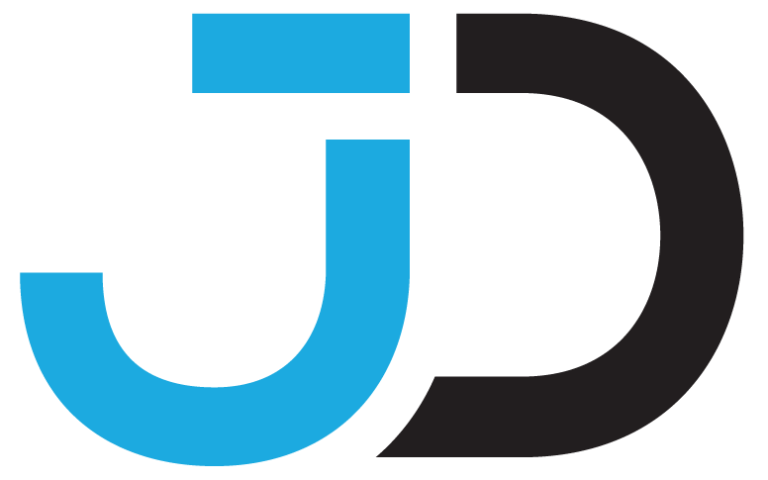In today’s fast-paced digital economy, businesses across every industry are under immense pressure to adapt to rapidly changing technologies, evolving customer expectations, and heightened global competition. Those unable to pivot quickly risk falling behind as innovation reshapes traditional business models. Jose Daniel Duarte Camacho, a seasoned entrepreneur and recognized authority on business agility, eCommerce, and financial technology, is helping organizations navigate this turbulent landscape with proven strategies for sustainable growth and resilience.
With years of experience leading companies through digital transformation, Duarte Camacho has become a trusted advisor for businesses seeking to remain competitive in an era defined by disruption. His insights provide a roadmap for building agile organizations that can not only withstand rapid change but also thrive by leveraging it as a catalyst for innovation and opportunity.
The New Imperative: Business Agility
Digital transformation has shifted from being a strategic initiative to a core necessity for survival. Advances in cloud computing, artificial intelligence, blockchain, and other disruptive technologies have fundamentally altered how businesses operate and how consumers engage with brands.
Duarte Camacho explains that traditional hierarchical structures and slow-moving decision-making processes are ill-suited to this new reality. “Agility is no longer optional,” he asserts. “Businesses must be prepared to adapt in real time, continually reassessing their strategies and operations to keep pace with technological advancements and market dynamics.”
He emphasizes that agility is about more than speed—it’s about resilience, flexibility, and continuous learning. Companies that embrace agile principles can respond to challenges proactively while seizing emerging opportunities ahead of competitors.
Key Insights for Thriving in a Digital-First World
To guide organizations through the complexities of digital transformation, Duarte Camacho shares several key insights rooted in his extensive experience and practical expertise.
1. Foster a Culture of Innovation and Experimentation
At the heart of business agility lies a culture that encourages innovation. Duarte Camacho advises leaders to create environments where employees feel empowered to experiment, take calculated risks, and share ideas without fear of failure.
“Innovation doesn’t happen by accident,” he explains. “It requires intentional effort to nurture creativity and reward forward-thinking initiatives.”
By promoting collaboration and open communication, organizations can generate a steady stream of innovative solutions to address evolving market demands.
2. Leverage Data as a Strategic Asset
Data has become one of the most valuable resources for modern businesses. Duarte Camacho stresses the importance of collecting, analyzing, and acting on data to make informed decisions and optimize performance.
Advanced analytics tools can provide insights into customer behavior, operational inefficiencies, and market trends, enabling businesses to act with precision and agility. “Data-driven organizations can anticipate change rather than simply react to it,” Duarte Camacho notes.
3. Integrate Emerging Technologies with Purpose
While the adoption of new technologies is essential, Duarte Camacho warns against chasing trends without clear strategic alignment. Businesses should focus on technologies that directly support their goals, such as artificial intelligence for personalized customer experiences, blockchain for secure transactions, or automation for streamlined operations.
“Technology should serve as an enabler, not a distraction,” he says. “The key is to integrate tools thoughtfully to create measurable value.”
4. Build Cross-Functional, Collaborative Teams
Agile organizations break down silos between departments to foster collaboration and shared accountability. Duarte Camacho highlights the benefits of cross-functional teams that bring together diverse skill sets, including technology, marketing, finance, and operations.
This approach ensures that decisions are holistic and aligned with the broader organizational vision, resulting in faster execution and more innovative solutions.
5. Prioritize Customer-Centric Strategies
In the digital era, customer expectations are higher than ever. Duarte Camacho emphasizes that agility must extend beyond internal processes to include customer-centric strategies.
“Businesses that listen to their customers and adapt to their evolving needs will build loyalty and drive sustainable growth,” he explains.
Personalized experiences, seamless omnichannel interactions, and responsive support are essential components of a customer-first approach.
Navigating the Challenges of Digital Transformation
While the benefits of digital transformation are significant, Duarte Camacho acknowledges that the journey is not without obstacles. Common challenges include resistance to change, limited resources, and uncertainty surrounding regulatory requirements.
To overcome these barriers, he recommends a phased approach that balances ambition with practicality. Starting with small pilot projects allows organizations to test new ideas, gather feedback, and refine strategies before scaling up.
“Transformation doesn’t happen overnight,” Duarte Camacho says. “It’s a continuous process of iteration, learning, and improvement.”
He also highlights the importance of strong leadership in guiding organizations through periods of change. Leaders must communicate a clear vision, provide ongoing support, and model the behaviors they expect from their teams.
The Role of Financial Technology in Driving Agility
Financial technology, or FinTech, plays a pivotal role in enabling agile business practices. Duarte Camacho points to innovations such as digital wallets, real-time payment systems, and decentralized finance platforms as essential tools for modern organizations.
These technologies not only streamline financial operations but also facilitate faster decision-making and more efficient allocation of resources. For businesses operating globally, FinTech solutions simplify cross-border transactions and reduce the friction associated with traditional banking systems.
“FinTech is more than a support function—it’s a strategic driver of agility,” Duarte Camacho explains. “It empowers businesses to operate with greater speed, transparency, and scalability.”
Looking Ahead: The Future of Business Agility
As digital transformation accelerates, Duarte Camacho predicts that the next decade will bring even greater disruption and opportunity. He envisions a future where organizations are defined not by their size or resources but by their ability to adapt and innovate continuously.
Emerging trends such as artificial intelligence, machine learning, and decentralized technologies will reshape industries, creating new business models and redefining competitive advantage. Duarte Camacho believes that businesses that embrace agility today will be best positioned to lead in this new landscape.
“The future belongs to the agile,” he says. “Those who can pivot quickly, learn continuously, and innovate fearlessly will set the standard for success.”
Conclusion: A Blueprint for Thriving Amid Change
Duarte Camacho’s insights offer a blueprint for organizations seeking to navigate the complexities of digital transformation. By fostering a culture of innovation, leveraging data strategically, and embracing agile practices, businesses can not only survive but thrive in an era of constant disruption.
As a trusted leader in business agility and digital strategy, Duarte Camacho continues to guide companies toward sustainable growth and competitive advantage. His vision of a dynamic, adaptive business world serves as both a challenge and an inspiration for organizations ready to embrace the opportunities of the digital age.
In a world where change is the only constant, Duarte Camacho’s strategies provide a clear path forward—one where agility is the key to unlocking long-term success and resilience.




